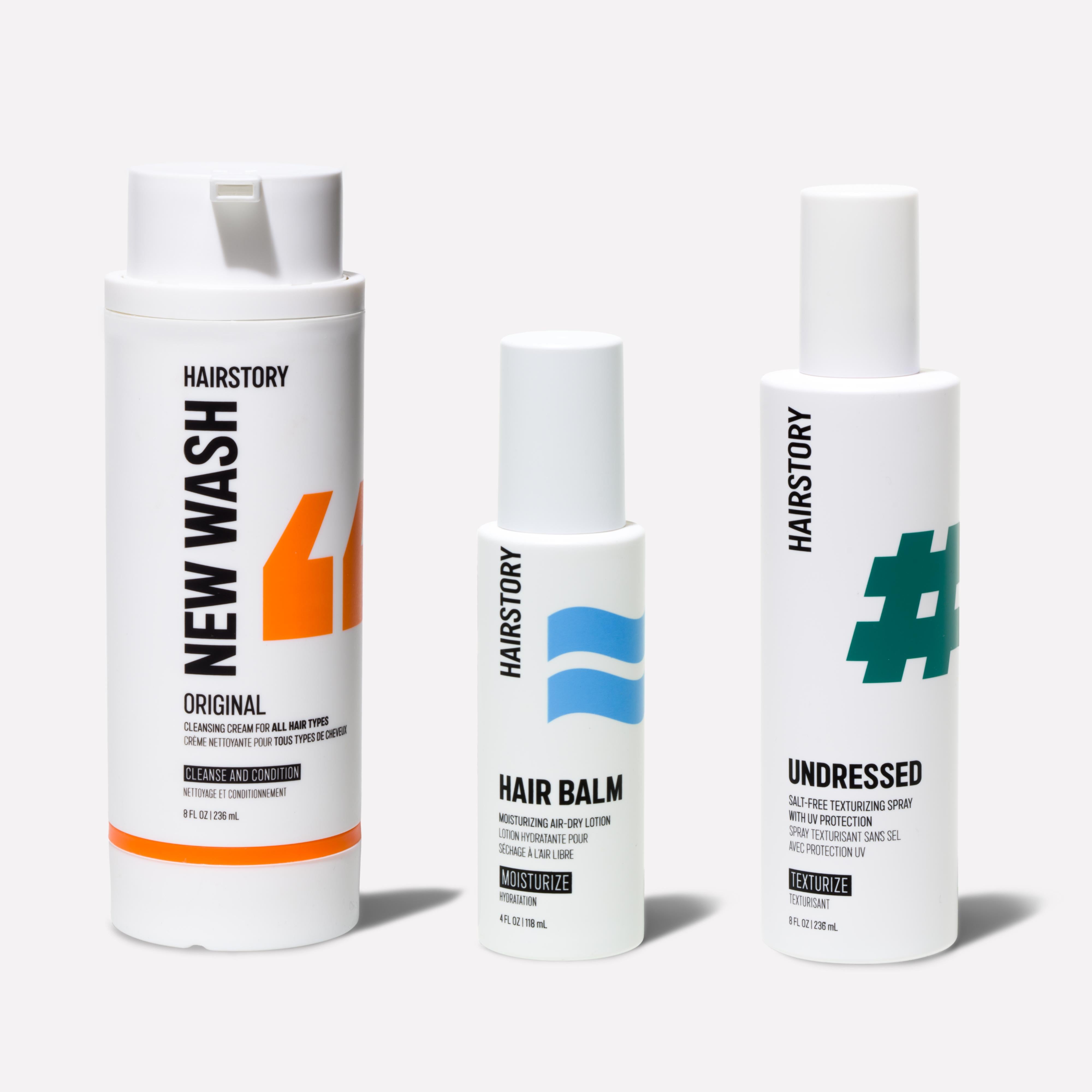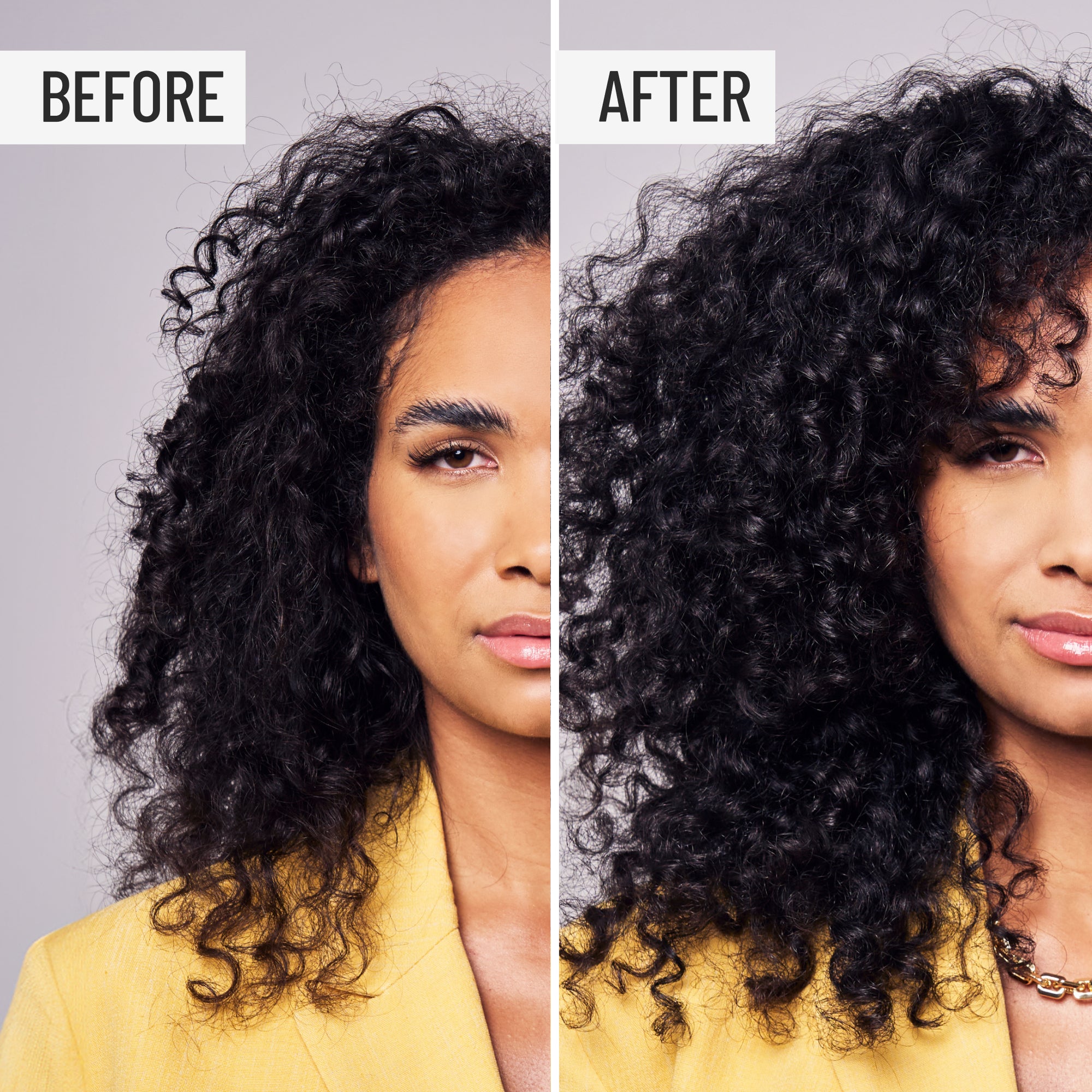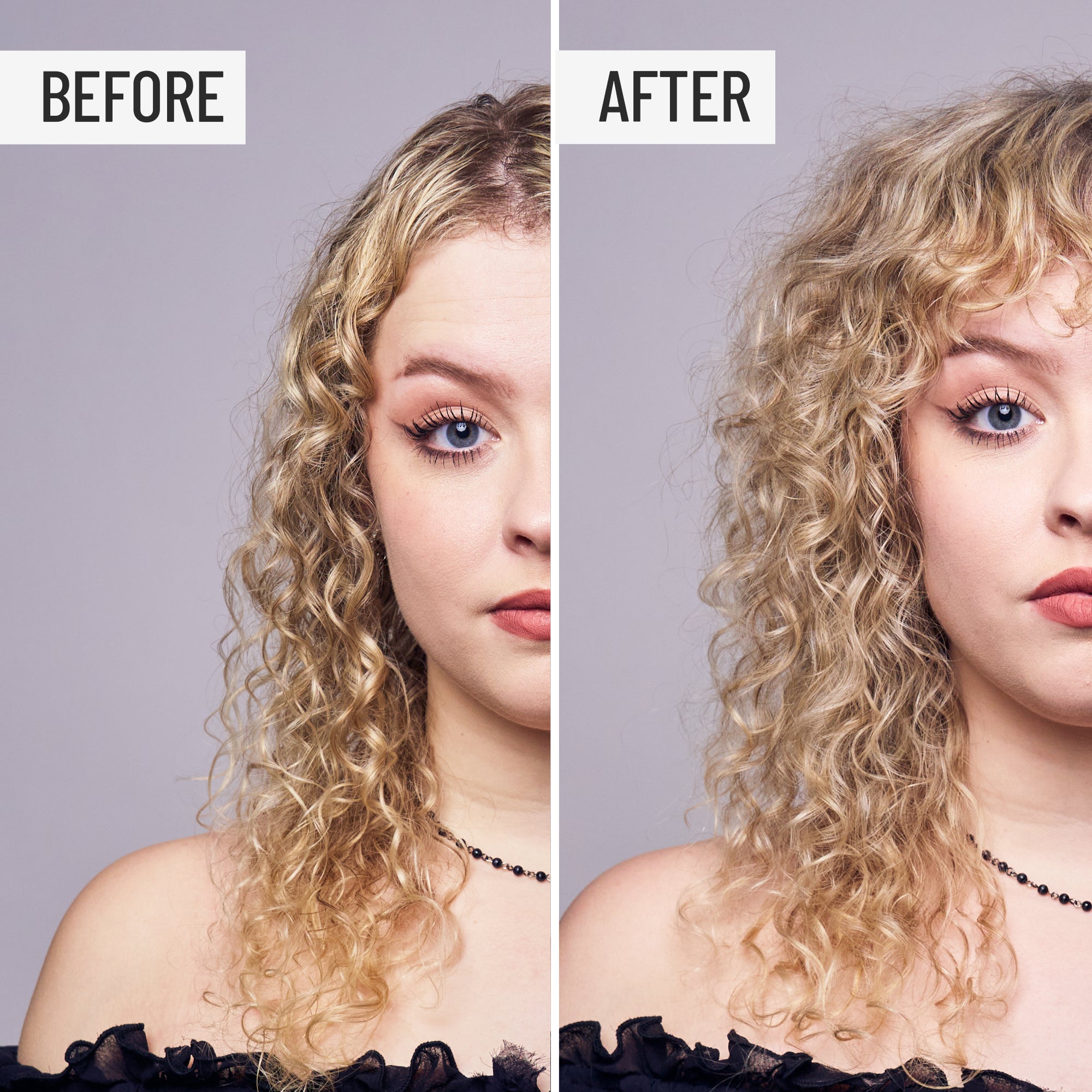Your scalp health determines your future hair growth.
If your scalp is having challenges such as dryness, flaking, or itching, you may be suffering from an underlying condition. While a scalp massage brush or cleaning the scalp can help improve your conditions, there are also a number of other methods that you can try out as well.
So, are you thinking that it’s time to step up your hair care routine? We'll teach you how to improve your scalp health for healthy hair growth in just a few simple steps! But first, let’s brush up on some biology.
GETTING TO KNOW YOUR SCALP
The skin on the scalp is made up of a large amount of hair follicles, creating a complex surface of nooks and folds. The scalp exists as its own microenvironment on the body, constantly adapting, shedding, and growing new skin cells. It also has a denser network of nerves that make it ultra-sensitive and responsive to touch, temperature, and even mood. Because of its sensitivity, scalp conditions can change often, leading to problems with hair growth, hair thinning, flaking, and other scalp issues. Our skin’s optimal pH level is between 4.2 to 6.5. To put things into perspective, a pH level of 2 is very acidic and a level of 12 is very alkaline. Most women show greater variation in pH than men. Fluctuation in the scalp pH, whether caused by aging, lifestyle, environmental factors, or hormones can influence the population of organisms that live in the scalp biome, and domination by any one species can cause issues.
The scalp contains sebaceous glands which produce sebum, an oil that keeps your scalp lubricated. The most common scalp issues occur as a result of the under- or over-production of sebum.
The scalp contains sebaceous glands which produce sebum, an oil that keeps your scalp lubricated. The most common scalp issues occur as a result of the under- or over-production of sebum. Hair that grows from an unhealthy scalp can show damage right at the cuticle; pitting, roughness, inflexibility, breakage, and dullness are all common. Cuticles that sheathe healthy hair are typically smooth and unblemished. Whether you suffer from a dry or oily scalp, there are a variety of different symptoms that can result due to your imbalance.
GETTING TO KNOW YOUR SKIN
Skin cells from head to toe are created, sloughed away and replaced daily. Skin is composed of three primary layers: the epidermis, the dermis and the hypodermis. New skin cells are created in the deepest layer, the hypodermis. There, thick, column-shaped cells develop as the genesis of every skin cell. The cells in this layer divide; half of these cells begin an upward and outward journey to the skin's surface, while the other half stay behind to produce more cells.
When these migrating cells reach the next layer, they change from their column-like shape to one more like a polygon. They also begin to make keratin, the tough, fibrous proteins that make up the main structure of the skin – and the main constituent of your hair and nails.
The skin cells continue to push upward to the dermis where they begin to flatten out and take on a grainy appearance.
Once skin cells reach their final destination – the epidermis – up to 30 sub-layers of skin cells are flat, tightly packed, and essentially dead. They continuously fall away as newer cells push their way to the surface. The entire process, from birth to shedding, takes approximately 14 to 28 days. This is how your skin constantly renews itself.
Where do all of these dead cells go? Most of the dust you see in your home is actually made up of shedded skin.
YOUR SCALP MICROBIOME
You may have heard of the gut microbiome in relation to digestive health, but did you know that the microorganisms living on your skin can also play an important role in skin health? The scalp in particular is a rich environment for beneficial flora. Areas dense in sebaceous oil have greater diversity of species compared to drier ones, which means that an imbalance in the population can have a greater impact if one species becomes too dominant.
Microorganisms living on your skin can also play an important role in skin health. The scalp in particular is a rich environment for beneficial flora.
The scalp microbiome primarily consists of the bacteria Propionibacteria and Staphylococcus, and the fungus Malassezia. Inflammation, in this case, is believed to be caused by fungal metabolites – by-products of digestion or other chemical processes – specifically free fatty acids.
When Malassezia proliferates on the scalp from feeding on excessive oil, seborrheic dermatitis develops. This is why most anti-dandruff shampoos include an antifungal agent such as Selenium sulfide, Ketoconazole, or coal tar: to reduce the population of this type of fungi.
THE SIGNS OF AN UNHEALTHY SCALP
• Hair loss
• Itchy scalp
• Change in hair texture
• Flaky scalp
• Limp, greasy hair
If you suffer from any of these symptoms above, you may have one of several scalp disorders.
COMMON SCALP DISORDERS
Dandruff, or visible, white flakes of shed skin, is considered to be the mildest form of seborrheic dermatitis. Due to its many causes, knowing how to get rid of dandruff can be difficult for some individuals.
Seborrheic dermatitis is a chronic condition in areas rich in sebaceous glands that produce sebum, your body’s natural moisturizer for your hair and skin. Redness and scaling frequently extend beyond the scalp to include the folds of the nose and eyebrow areas. A cause of seborrheic dermatitis is understood to involve fungi of the genus Malassezia.
Eczema can appear anywhere on the body as itchy, red-to-brown rashes with small raised bumps that develop due to a hypersensitive immune system mistaking a harmless substance as a threat – and creating inflammation as a means of protection.
Psoriasis is a chronic inflammatory condition involving both oxidative stress – a deficiency in the body’s natural antioxidants – and an overgrowth of Malassezia, one of the fungi that are a natural part of the scalp environment. Psoriasis occurs anywhere on the body when it fails to shed skin cells at a normal rate, causing a buildup that forms red patches topped with silver scales.
Premature hair loss may be caused by seborrheic dermatitis or psoriasis that may weaken the anchoring of the fiber at the base of the follicle.
THE CAUSES OF AN UNHEALTHY SCALP
Overactive sebaceous glands, stress, pollution, poor nutrition, and even wearing the same hat too often are all contributors of scalp problems. Hair products like heavy oils, sprays that contain resins, and some dry shampoos can also cause a buildup around hair follicles.
1. Hair damage
Oxidative stress, when free radicals outpace the natural antioxidants such as Vitamin E in your body, is also a factor. Free radicals are oxygen-containing molecules – essentially metabolic waste – with an uneven number of electrons that easily react with other molecules. These reactions are called oxidation, and it appears to play a role in premature hair loss as it affects nascent hairs while inside the follicle.
2. Your hairstyle
Are you wearing super tight ponytails? Extra-long braids or extensions? If your scalp feels tight and sore, it may be caused by your daily hairstyle. Wear, tear, and carrying extra weight can all be taxing.
3. How you wash
Having your scalp lovingly and gently traced by fingernails can send rapturous tingles down the spine, but using your nails to aggressively wash your scalp or scratching persistent itches will only lead to disappointment and inflammation of the skin, causing entry points for bacteria and a signal to produce oil.
HEALTHY SCALP TIPS
If your scalp is crying out for help, there are a number of treatments available – ranging from over-the-counter solutions to medicated cleansers to natural ingredients and herbs that you might find in your kitchen. To prevent disorders from happening, follow these tips:
Exfoliate.
Scalp exfoliation is key if you want to achieve a healthy head of hair. Massage away dead skin on a regular basis.
Preserve moisture.
Sometimes, scalp problems are just the result of dry skin – even a normal scalp will flake if the hair is unwashed. When you bathe, avoid hot water whenever possible and use lukewarm water instead to allow more moisturizing sebum to remain on your scalp. Refrain from using a blow dryer to give your scalp a break from the harsh heat.
Massage.
Beneath the skin on your scalp is an intricate network of blood vessels that carry oxygen and vital nutrients to the tissue. Keep the circulation going in your scalp by massaging the skin when you wash. If you can, carve out 5 to 10 minutes for an invigorating massage ritual, or go all the way and seek out a professional bodyworker.
Limit chemical treatments.
If your scalp is suffering, hair coloring, perms, and chemical straightening can dry out and irritate it. Avoid them if you’re able, and be vigilant for signs of burning or itching during any chemical treatment, and put a stop to it by rinsing.
Screen from the sun.
Skin cancer often develops on the scalp, which is nearly always exposed yet usually unseen. When you plan to be in the sun for long stretches of time, wear a hat and/or sunscreen to protect your scalp. This is especially important for those with very fine, blonde, grey, or thinning hair, who are all at risk for sunburn.
Eat well.
A well-balanced diet rich in fruits and vegetables will help supply the the body with vitamins and minerals that are necessary for new, healthy cells. Include meat, poultry, fish, eggs, and nuts – or plant protein if you’re vegan – to ensure that your body has an adequate supply. Some vitamins are particularly beneficial.
Vitamin C fends off signs of aging by helping to heal damaged or dry skin. Dietary sources include citrus, strawberries, broccoli, spinach, and hibiscus.
Vitamin D may help treat psoriasis. A 2009 study published in the Journal of Drugs and Dermatology found that vitamin D applied topically reduced the associated inflammation and irritation. Dietary sources include grains, citrus, and dairy products.
Vitamin E is produced by sebum. If you have particularly dry skin, vitamin E can help compensate for a lack of sebum, and reduce inflammation. Dietary sources include nuts and seeds, leafy greens, and sweet red pepper.
IN CONCLUSION
Once you know what actually happens above your hairline, keeping your scalp happy is a matter of some common sense combined with sensible self-care. A house can’t stand on a foundation that is anything but solid, and beautiful hair can’t grow from a scalp that is anything but healthy.































